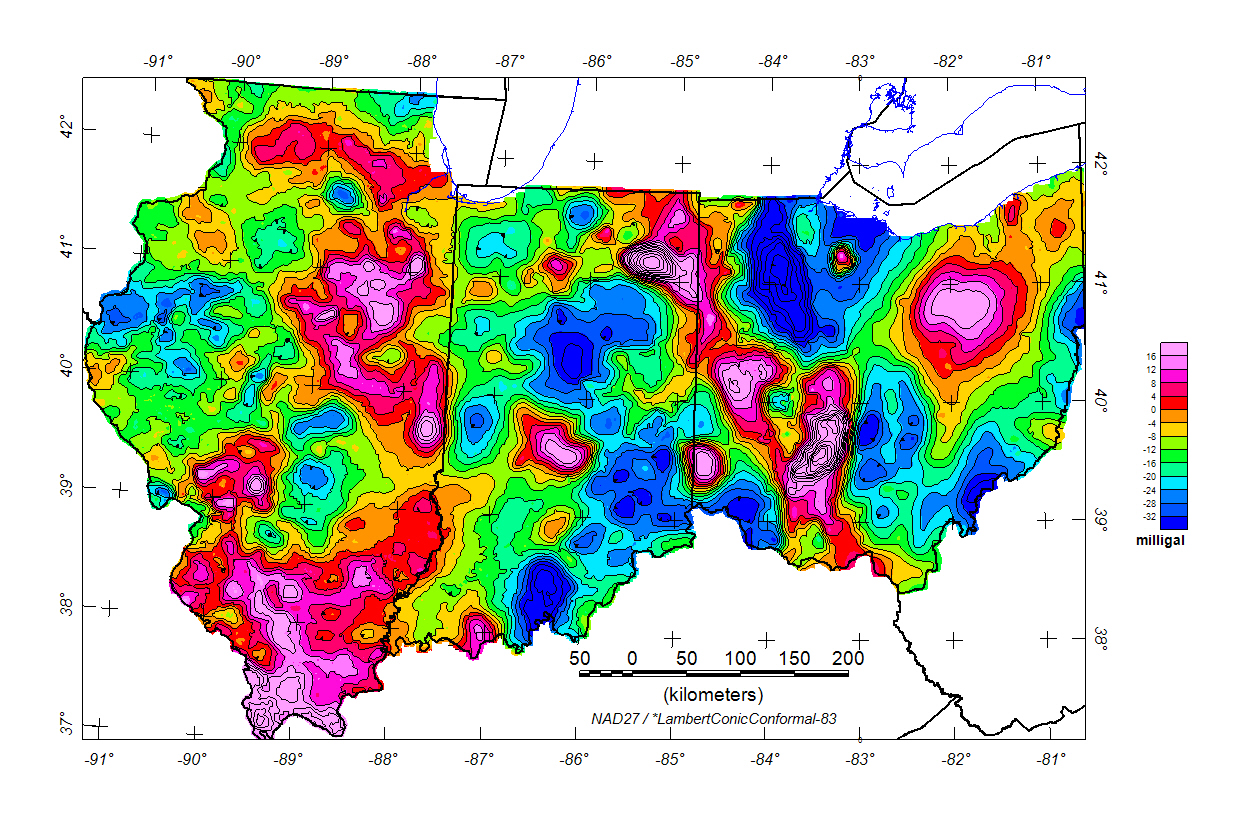DS 321: Isostatic Gravity Map
Illinois, Indiana, and Ohio Isostatic Gravity Anomaly Map
The colors on this isostatic residual gravity anomaly map (Bankey and others, 1995) reflect variations in the Earth's gravity field caused by density variations in the rocks composing the upper part of the Earth's crust. An isostatic residual gravity grid was derived from the complete Bouguer gravity anomaly data by removing the gravitational effect of the compensating mass that supports topographic loads. The thickness of this compensating mass was calculated using averaged digital topography by assuming a crustal thickness for sea-level topography of 20 km, a crustal density of 2.67 gm/cc, and a density contrast between the crust and upper mantle of 0.30 gm/cc. The anomalies and patterns on the map reveal features of subsurface geology, including the location of buried faults, sedimentary basins, plutons, and uplifted basement rocks. Although compensating masses in these three States are minimal due to the subtle geologic structure, an isostatic grid/map was created to display how little the isostatic anomaly field varies for these States. The more positive anomalies (red colors) delineate rocks more dense than the Bouguer reduction density of 2.67 gm/cc, whereas the more negative anomalies (blue colors) result from rocks of lower density. The color scale used to create this image is nonlinear to best represent the range of values. The source of the station information is the University of Texas-El Paso (UTEP) / PACES research center website. This compilation does not include any unpublished data. The grid for this map is available from the data directory as ilinoh_iso.grd
|
Version 1.0 Posted March 2008 |
For more information about this report contact: Pat Hill